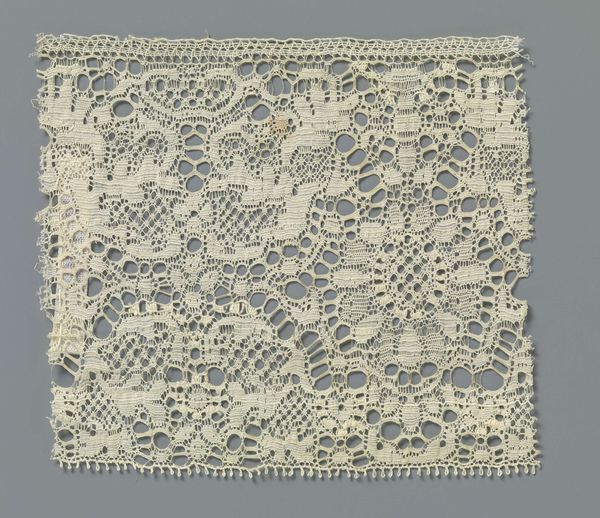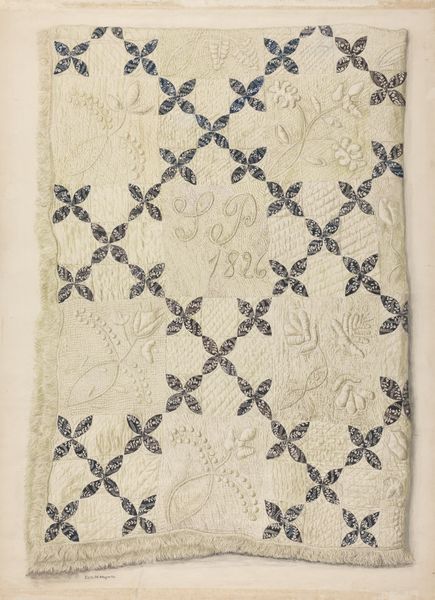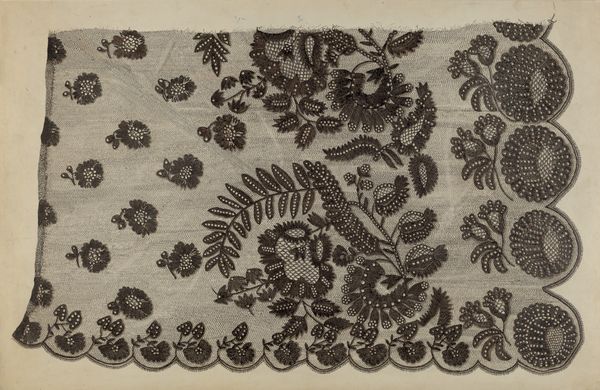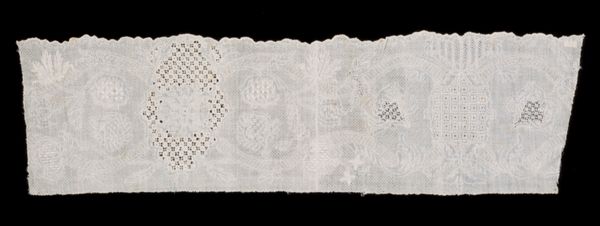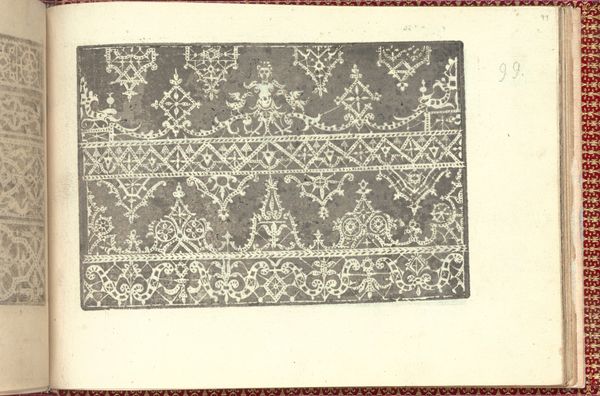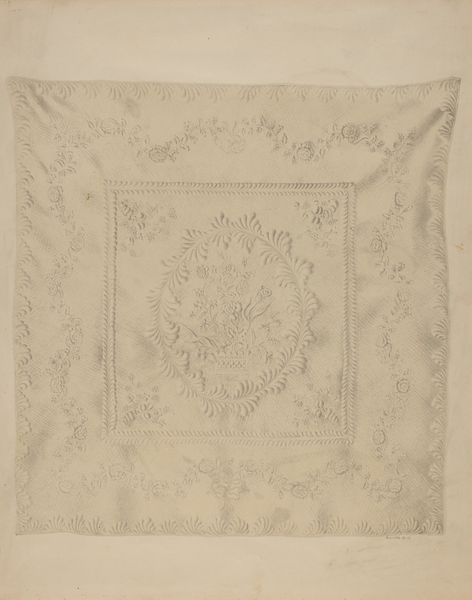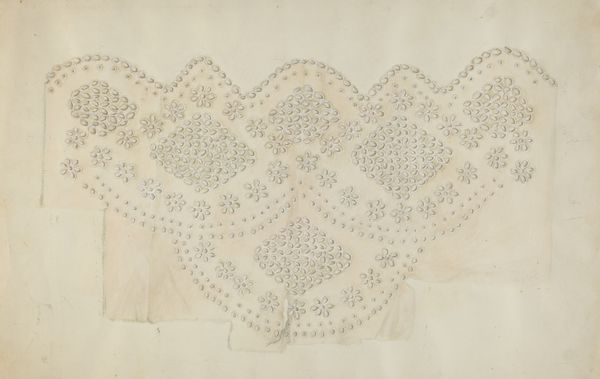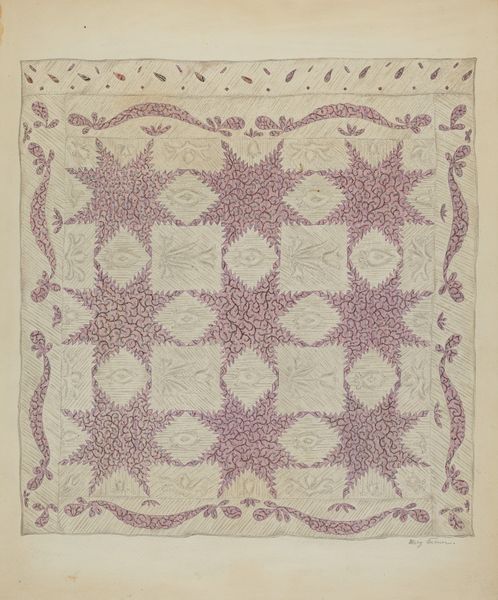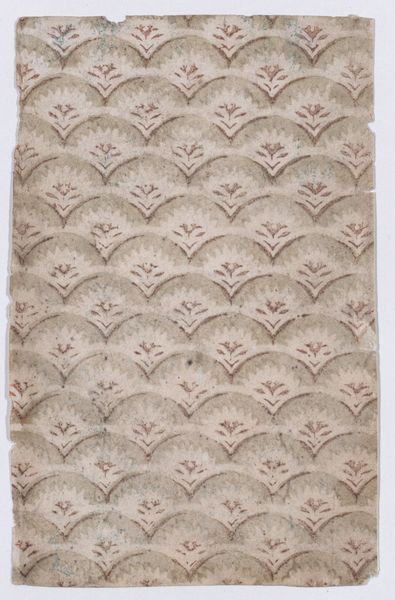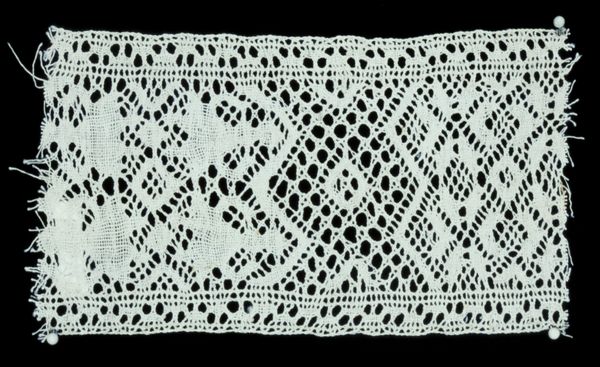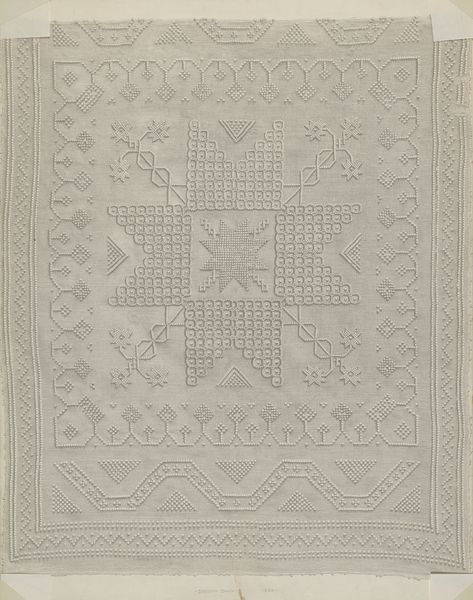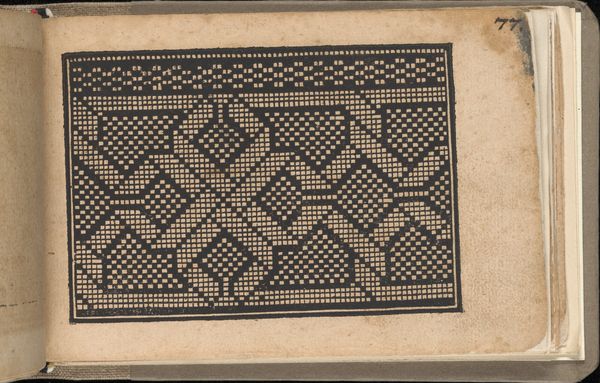
drawing, textile
#
drawing
#
natural stone pattern
#
rippled sketch texture
#
pattern
#
textile
#
repetitive shape and pattern
#
geometric
#
fabric design
#
repetition of pattern
#
vertical pattern
#
intricate pattern
#
pattern repetition
#
decorative-art
#
imprinted textile
#
layered pattern
Dimensions: overall: 35 x 45.9 cm (13 3/4 x 18 1/16 in.)
Copyright: National Gallery of Art: CC0 1.0
Editor: This drawing, titled "Lace" by Erwin Schwabe, was made sometime between 1935 and 1942. What strikes me is how incredibly detailed it is. The drawing is of textile; each stitch seems meticulously rendered. What stands out to you as you look at this piece? Curator: It's easy to be drawn in by the virtuosity of the execution. However, I think we also need to consider the broader material conditions implied by this piece. "Lace," likely rendered with graphite or a similar material, elevates what is fundamentally a craft item to the realm of high art. The labor invested in the original lace object, presumably handmade, is doubled through the act of drawing it. Consider the social and economic implications. Who was producing lace during this period, and for whom? What kind of market did they reach? How were these textiles and similar items consumed? Editor: That's fascinating. So you're suggesting that the drawing isn't just about the beauty of the lace itself, but also about the labor and social context that went into making it? It does invite reflection on the hierarchy between fine art and craft. What does it mean to reproduce textile in a fine art like drawing? Curator: Precisely. The artist makes the familiar unfamiliar, and in doing so makes visible all of the historical material relations embedded in a seemingly simple object. It highlights the role of reproduction, representation, labor, skill and consumer culture – can art truly challenge those conventional separations or do they inevitably solidify when represented within art’s conventional space? Editor: That is true; I guess, by thinking about the material conditions, we start to appreciate the hidden stories embedded within a decorative image. Curator: Indeed. We begin to see the drawing less as a depiction of a static object, and more as a lens through which we can examine the dynamic relationships of production, consumption, and artistic representation. Editor: I never thought I could view such a common subject from such a fresh angle!
Comments
No comments
Be the first to comment and join the conversation on the ultimate creative platform.
